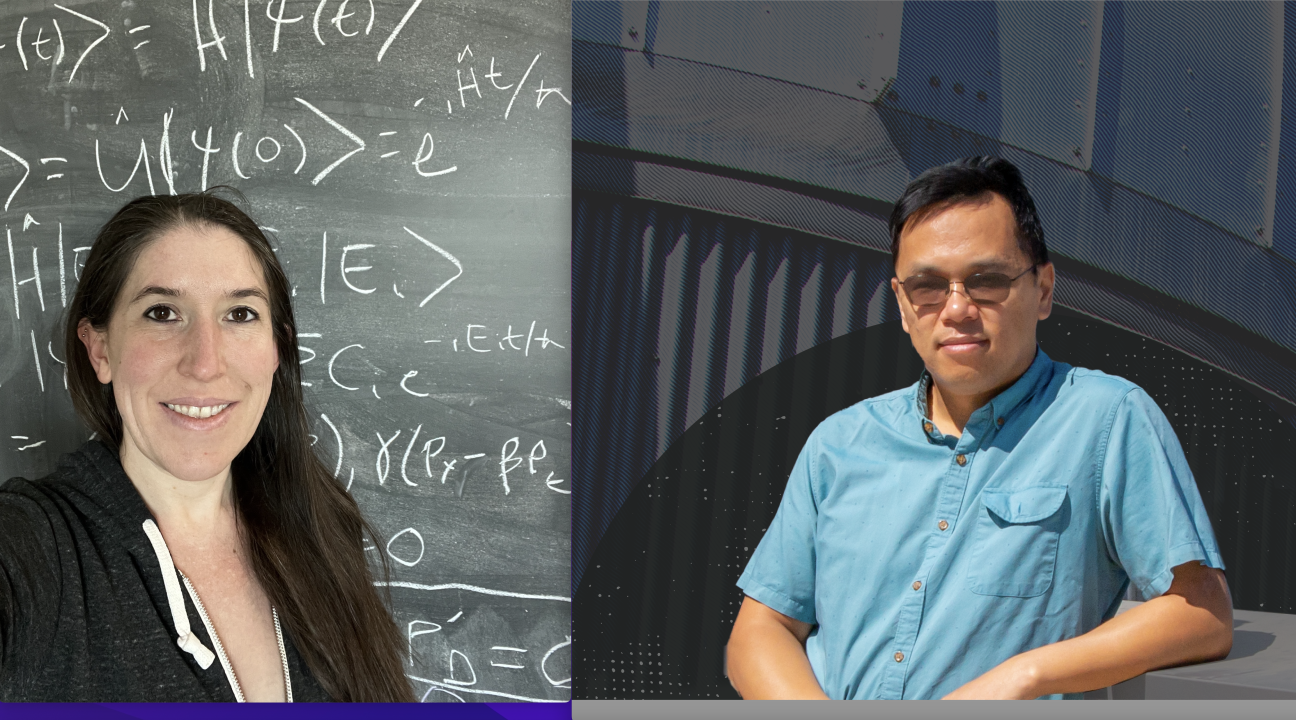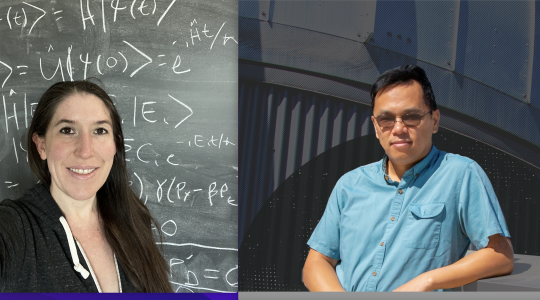Physics Department About to Experience GROWTH
Sonoma State and CSU Stanislaus Collaborative Grant to Support High Energy Particle Physics Study, Research Opportunities
Sonoma State Professor Alexandra Miller, in partnership with Associate Professor Wing To of Stanislaus State was awarded a $950,000 grant from the Department of Energy’s Reaching a New Energy Sciences Workforce (RENEW) program to teach high energy physics and engage students in research and internship opportunities.
It is the first Department of Energy Grant ever awarded to either University.
The nearly $1 million for the pair’s proposal, Growth and Research Opportunities With Traineeships in High Energy Physics at Minority Serving Institutions (GROWTH-MSI), will support 10 students per year beginning in January 2024. Each student will receive up to $19,000 in scholarship and stipend support during their junior and senior years.
“College-life is especially challenging for many students at CSUs because they need to work many hours in addition to going to school in order to support themselves,” Miller said. “Our traineeship is designed to pay students to complete professional development activities and start research, setting themselves up for success in the future. Ideally, our students will not need to work at all in addition to the traineeship.”
To and Miller expect to find participants, not only from their own campuses, but also from students of Marteen Golterman at San Francisco State, Kathryn Grimm at Cal State East Bay, Yongsheng Gao at Fresno State and Anna Nierenberg at UC Merced. All four provided input to the GROWTH-MSI proposal.
Applications will be accepted in the fall and the program will launch with a gathering in January 2024, likely at Stan State, where students, faculty mentors and industry scientists, who will serve as mentors and research leaders, will meet for the first time.
“Having these consortiums, with students from different universities who are in the same place as them, gives them a sense of belonging, a physics identity and structure and other support,” To said.
Students will receive up to $3,000 for each of their last three semesters and $6,400 for their summer research coupled with a $3,600 housing allowance. In return, students are required to commit 15 hours per week to the program.
During the first semester of the program, students will attend 12 to 15 sessions with professionals sharing virtual presentations on work they are doing at various labs. Those will help students determine their interests as they select a summer project at either Lawrence Berkeley National Laboratory, Lawrence Livermore National Laboratory, SLAC National Accelerator, UC Berkeley or UC Santa Barbara.
They’ll also be required to take an introduction to particle physics course during that first semester. To and Miller will co-teach it, with To teaching it in person at Stan State and other students participating on Zoom. Future courses may be offered as well.
Once they’ve done their summer internship, students will likely spend more time working on their project during their senior years and will write a capstone paper to present at a public event.
Miller and To modeled GROWTH-MSI on Cal Bridge, a program offered to students in Science, Technology, Engineering and Math fields and funded by the National Science Foundation and the State of California.
Serving as mentors and members of Cal Bridge’s steering committee is how Miller and To met.
They understand the uphill climb CSU students face.
“The field of high energy physics is really lacking in diversity, which means it is missing out on a range of unique perspectives that science could benefit from,” Miller said. “This DOE initiative is aimed at bringing these important viewpoints to the table by training students from Minority Serving Institutions.”
GROWTH-MSI is not just for students contemplating earning advanced degrees.
“Having an introductory level version as an undergraduate class not only gives students who are graduate-school bound a taste of what high energy physics is about, but it also gives undergraduates who are not PhD-bound a chance to learn this material. If they are interested in working as a technician in high-energy physics, they will have some background on why an experiment is designed that way,” To said. “It's useful for workforce development and academically driven students.”
Developing a workforce is the goal of the Department of Energy.
“They want to encourage underrepresented students to pursue STEM careers, not just physics, but all STEM careers,” To said.



